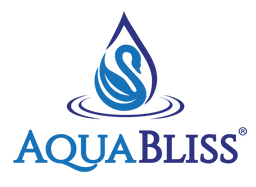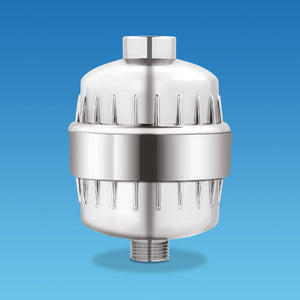It doesn’t matter if you’re showering, drinking water, or swimming in a pool; you may be wondering if there’s too much chlorine in the water. Ideally, you want water to be as pure and healthy as possible.
Although useful in a pool, you should be aware that there are some dangers that come with being exposed to too much chlorine at once. It can even work to destroy the good bacteria in your intestines.
Given all this, you may be wondering how to get chlorine out of water. Here, we will dive deeper into what chlorine is and various ways to reduce chlorine with the use of shower filters.
Why is Chlorine Added to Water?
Chlorine is added to water for the exact same reason why it’s added to any water supply. The main purpose chlorine serves is that it can act as a disinfectant. It works by removing viruses, bacteria, and protozoans from the water, for example, to avoid any waterborne diseases.
Therefore, the water will then be safe for you to drink and fully purified. You may want to get in the habit of testing for certain chlorine levels and amounts at home to make sure it’s safe for drinking and use.
The EPA has mandated that drinking water should never contain more than four milligrams per liter of chlorine; otherwise, it may pose a danger and risk. You want to make sure that you can get accurate readings so that the levels you’re consuming are never too high.
The good news is that if they are higher than you’d prefer or that are safe, there are some methods to apply that can help you get chlorine out of water. Then, you can test the levels again after having followed these procedures and see if it is safe for you to drink and use.
What is Chlorine or Chloramine?
You may have heard of the terms chlorine and chloramine before. However, you may also be wondering what makes them different and sets them apart from one another. In fact, they are two totally different water treatment processes.
Of the two options, chloramines tend to be more effective than chlorine. Chloramines are a chemical that is a combination of chlorine and ammonia. The chemical formula for monochloramine, the most common type of chloramine, is NH2Cl. It’s used as a disinfectant to treat drinking water.
The chemical formula for chlorine gas is Cl2. It's a yellow-green gas with a bleach-like odor that's soluble in water. It’s not only used to make cleaning products but can effectively move germs from drinking water and swimming pools, for instance.
There are certain health effects and concerns to be aware of with both of these chemicals. For example, chlorine can cause eye irritation, irritation to the respiratory system, skin irritations, gastrointestinal issues, and even an increased risk of colorectal cancers.
Chloramine can also cause some of the same problems, such as respiratory issues, skin and eye irritation, and gastrointestinal issues, in addition to corroding metals and hemolytic anemia.
Ways to Get Rid of Chlorine or Chloramine from Tap Water
You want to be able to drink tap water in peace, knowing that it’s good for your body. Therefore, you want it to be as clean and purified as possible.
If you measure your drinking water levels and the chlorine is too high, then you may be wondering about some ways to get rid of chlorine or chloramine from tap water.
The following list is a set of options you can use to ensure that you have a positive experience drinking tap water and can reduce the chance of any health concerns.
1. Boiling

One effective and easy way to remove chlorine or chloramine from tap water is to boil it. You can remove all the chlorine from your tap water by simply boiling the water for roughly 15 minutes. Ideally, you should use a wide-topped container to remove the chlorine effectively.
2. Evaporation
Another alternative is to put water in a jug and leave it out on the countertop uncovered for 24 hours. Without having to boil the water, the chlorine will evaporate. Evaporation is by far the easiest way to remove chlorine or chloramine from tap water.
The reason is that chlorine is volatile, so it should quickly evaporate without much issue. All you have to do is put the water out and leave it to stand. This is one method where you won’t have to spend any money to get rid of chlorine in your tap water.
Keep in mind that although it’s effective, it can also be time-consuming. It’s a natural solution that won’t require you to purchase any extra tools or systems.
3. Reverse Osmosis System
You should also know that a reverse osmosis system can also effectively remove chlorine from tap water. Impurities are removed from the water using a semipermeable membrane.
Before being pushed through the membrane, the water is fed through a sediment and carbon filter. This method offers many benefits, including improving the taste and smell of your water.
The best part is that you can rest easy knowing that the reverse osmosis system removes up to 99 percent of dissolved salts, particles, colloids, bacteria, and pyrogens.
There may also be lead, arsenic, and various organic compounds and components in your drinking water that this method can safely and effectively remove.
Keep in mind that there are a few downsides that you should note. For example, you may experience an increase in your water bill, and these systems can be expensive to purchase and install. However, it may be a good investment and long-term solution instead of having to buy bottled water.
4. UltraViolet Light
If you’re only looking to remove microorganisms from your water, then using ultraviolet light is the way to go. You’ll discover that it can’t effectively remove other contaminants such as heavy metals, salts, chlorine, or man-made contaminants.
It can’t and doesn’t directly remove chlorine from tap water. It can’t break down chemicals such as chlorine; instead, it works to disrupt the DNA of viruses and bacteria.
If you’re going to successfully get rid of chlorine in your tap water using ultraviolet light, then you’d also need to invest in a carbon filter in addition to using the light.
5. Use A Water Filtration System

There are many different water filtration systems out there that you may want to consider using if you want to remove chlorine from your tap water. Many of them work by applying the process of reverse osmosis.
Some of the water filtration systems you can use to remove chlorine are activated carbon and pitcher filters. An activated carbon filtration system works by removing chemicals that are dissolved in water. It does so when the water passes through the filter containing a GAC.
The GAC absorbs and traps the chemicals so they are properly removed from the tap water. You can expect to pay thousands of dollars for one of these systems. You’ll need to clean it regularly, and you’ll want to check the manufacturer’s guidelines for proper maintenance.
You can rinse it with water or soak it in a solution regularly. When the filter is no longer working effectively, you’ll want to replace it. The other option is using a pitcher filter.
These will typically set you back a couple hundred bucks. You’ll want to clean and flush the system regularly. Inspect it often for leaks or clogs as well. You should also check the liquid pressure for irregularities.
Your water will likely taste and smell better, and it can effectively reduce or remove contaminants such as chlorine. One downside is that it may remove fluoride from your drinking water, which can offer some benefits for your teeth.
Can A Showerhead Filter Reduce Chlorine?

The short answer is yes: a showerhead filter can reduce chlorine in water. As water passes through them, these showerheads are designed to catch any chlorine.
While they can reduce the amount of chlorine in the water, one downside is that they can’t and don’t address other water quality issues. The positive result, however, is that you will experience a more gentle shower experience.
It’s good for your skin and hair as it can reduce skin irritants and harsh chemical smells. It works by using the filter to convert any contaminants into harmless substances as the water passes through it.
The benefits are that it can improve skin and hair quality, allow your body and skin to breathe better, and prevent any gunky buildup. You may also experience better air quality at home.
Clearing Out Chlorine for A Healthier Lifestyle
As you now know, chlorine and chloramines can negatively impact your overall health and well-being, especially in high volumes.
Therefore, you should consider implementing some of these removal strategies if you want to live a healthier lifestyle and rest easy knowing your tap water is free and clear from any harsh chemicals.
One excellent starting point if you want to remove chlorine effectively from your water at home is to invest in a shower filter. AquaBliss shower filters, for instance, are specifically designed to reduce chlorine and other impurities, providing a more refreshing and chemical-free shower experience.
Your hair and skin will thank you, and you’ll feel better knowing that you have effectively removed chlorine buildup during your shower.







